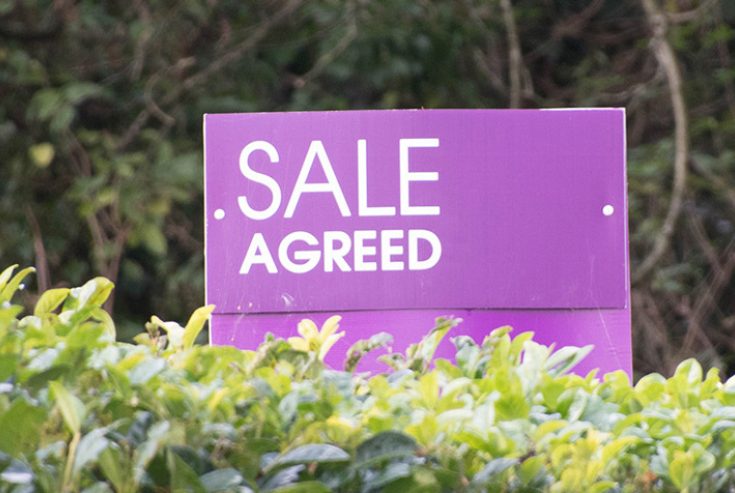Selling your home can be a daunting process and our simple step by step guide is designed to help you understand the Freehold selling process and what is involved.
Step 1: Instruct your Conveyancer
- Once you decide to sell your property you should consider which conveyancer you would like to act on your behalf and obtain confirmation from them that they are able to act in the sale of your property
- The Conveyancer will provide you with an estimate of the costs and disbursements ( such as Land Registry fees) for the matter
- You should then confirm to the Conveyancer that you would like them to act on your behalf
- Your Conveyancer will then send to you :
- A client information letter which sets out the information you need to be aware of such as who will be dealing with the matter, the costs, and the work they will carry out.
- Terms and conditions of business
- Request for Identification documents
- Questionnaires about the property. You must fill these forms out truthfully and to the best of your knowledge. If it later transpires that you have not been fully truthful you could be sued for compensation. Or, if the buyer finds out before exchange of contracts, it might make them nervous that you are misleading them about other things and they may pull out.
- The TA 6, also known as the Property Information form, is a general questionnaire and includes information on boundaries, disputes and complaints (such as reported noisy neighbour complaints or boundary disputes), any known proposed developments (like motorways or railways), building works, electrical and gas works to the property, warranties, utilities, sewage, contact details.
- The TA 10, also known as the Fixtures and Fittings form provides details of which fittings and fixtures you would like to include with the property. You may wish to discuss this with your buyers if you want to sell any items or leave any items at the property following completion
- Once you have completed the forms you will need to send them back to your solicitor and they will forward these to the buyer’s Conveyancer together with the draft contract (the legal contract agreeing to sell the property to the buyers) and a copy of the evidence of your ownership of the property, the Land Registry title and title plan. You should return the signed confirmation of instructions and take your identification documents to your Conveyancer together with evidence of where you would like any sale proceeds paid on completion. Doing this at an early stage will avoid delays later in the transaction
Step 2: Once you have a buyer
- Your Conveyancer will receive a Memorandum of Sale from the Estate Agents marketing the property which sets out the names and of the sellers, the buyers, both parties Conveyancer details, the property details and purchase price.
- If there are no Estate Agents involved then your Conveyancer will ask you for the details for the buyer’s Conveyancer so that they can contact them.
- Once your Conveyancer has the buyer’s Conveyancer’s details they will then prepare the ‘Contract Pack’ which contains:
- The Property Forms which you completed
- The Draft Contract
- The Land Registry title documents
- Any other supporting documents
Step 3: Before Exchange of Contracts
- The Buyer’s Conveyancer will review these documents and will often check the Land Registry title plan with the Buyer’s before putting in hand ‘searches’ on your Property.
- The ‘usual’ searches carried out by the Buyer’s Conveyancer are:
- The Local Authority Search – this checks planning and building regulation approval for the property and works carried out, as well as road adoption, traffic schemes etc.
- Drainage and Water search – this provides information over if the property is connected to Mains Water and Mains Drainage.
- Chancel Search – this advises whether there is any potential liability on the owners of the Property to contribute towards the repair of the chancel of the local church
- Environmental Search – this provides information in relation to potential environmental risks in the area, such as flooding , ground stability and land contamination
- The Buyer will often have had a survey conducted on your property. This may be in addition to the usual lender’s valuation which is purely for the benefit of the lender. If the survey flags up anything major the buyer may want to negotiate over who will fix this or even renegotiate the sale price. Your solicitor or conveyancer would advise you on this matter.
- Once the Buyer’s Conveyancer has reviewed the search results, forms and Land Registry Title they may raise questions to clarify anything which they are unsure of.
- You should cooperate in replying to the enquiries as far as you are able to. Your solicitor or conveyancer will assist you in this.
- When the Buyer’s Conveyancer is happy with the replies they will report to the Buyer with the contract for signing.
- The Buyer will then need to make sure they are happy with everything their solicitor has advised them. If they are happy they will sign and return the contract to their Conveyancer together with the deposit and any other signed documents they may require before exchanging.
- By this stage your solicitor will have sent you a copy of the contract for signing as well and provided you are happy to sell the property you should sign and return this to your solicitor as soon as possible so that they can exchange contracts once the Buyer is ready
Step 4: Exchanging contracts
- You and the buyer will need to have agreed a completion date before the Exchange of Contracts can take place. At this stage the Buyer will have provided their Conveyancer the required deposit ( usually 10%), this will not be handed over to you until Completion, unless otherwise agreed
- Completion is generally between 1 – 3 weeks following Exchange of Contracts but is dependent on what is agreed between you and the Buyer.
- The Exchange of Contracts is usually done by both Conveyancer making sure the contracts are identical ( this is carried out during a telephone conversation) and then immediately sending them to one another in the post
- If you or the buyers are in a chain the Conveyancer will do the same thing, but will only release it if the other people in the chain are all happy to go ahead. This means if one person pulls out or delays, then everyone in the chain may be held up.
- Exchanging Contracts makes the sale legally binding and you could incur penalties should you not complete on the completion date set out in the contract.
- If you pull out, they can take action forcing you to complete or you may be liable for their fees. If you have any concerns in relation to this you should take your Conveyancer advice on the matter
Step 5: Between exchange and completion
- You will still own the property until completion. The contract will usually provide that the buyer is to insure the property between exchange and completion.
- Your solicitor will request the Estate Agent’s account and a redemption statement, if applicable, and then draft a completion statement and make arrangements to pay your estate agents ( if you have instructed any to sell your property) and redeem your mortgage ( if you have a mortgage on the property)
- You should check the property before you complete ensuring that everything that was on the fixtures and fittings inventory list is still in the property and make sure no damage has been caused by removing any items. The buyers may require you to repair any damage you cause when removing items from the Property.
- If you are not buying onwards then you will need to let your solicitor know where to send the sale proceeds on completion and provide a forwarding address
- If you have not signed a Transfer Deed (this is the document which the Land Registry require to transfer the legal ownership of the Property) before exchanging contracts then you will need to make sure you do before completion.
Step 6: On completion day
- The Buyer’s Conveyancer will make arrangements with your Conveyancer to send them the money on the day of completion. Once your solicitor received the purchase money then they will instruct you to hand over the keys (usually to the estate agents if you have instructed any or directly to the buyer).
- Your Conveyancer will then pay the estate agents and repay your mortgage before sending any left over money to you ( if you are not purchasing another property)
- Your Conveyancer will send the signed Transfer Deed and any other documents they hold to your Buyer’s Conveyancer. The Buyer’s Conveyancer will ensure that the change of ownership is registered with the Land Registry and notify you once this is completed.
For further advice on this and other Residential Property issues contact Gemma Bath or our Residential Property department.
Please read Reliance on information posted in our Terms of Website Use - see Legal section - before relying on this commentary.
















